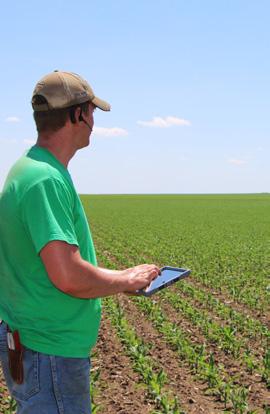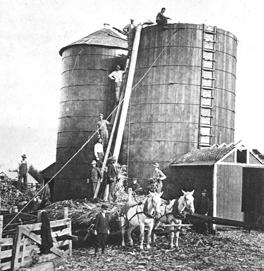
1 minute read
Farmers Cooperative Society
FCS is committed to investing in cuttingedge programs & technology to help our customers succeed

Advertisement
Two green mountain staves at the dairy farm at Iowa State College.

Filling the silo at the J.S. Pingrey farm near Hurley, S.D., in 1911. Filling the first generation of upright silos was a very labor intensive process. Photo from Hurley Centennial book.
For several decades, as cattle feedlots and dairies have gotten significantly larger, there has been a move away from silo towers and towards silage being stored in plastic-wrapped bunkers, plastic-covered piles or plastic bags. These methods are typically easier to work with and the feed is faster to access than feed in upright silos. As fewer upright silos are built and old ones are torn down or fall down, it appears to only be a matter of time until silos follow windmills and barns as a disappearing site in the Midwestern farm landscape.
Alcester | Boyden | Ireton | Lime Creek Little Rock | Melvin | Ritter | Sanborn Sioux Center | Worthing
www.farmerscoopsociety.com
Sources:
• Cheryl Mullenbach, iowawatch.org, 2017 • J.B. Davidson and M.L. King, Iowa State College Ag Experiment Station Bulletin #117, 1910. https://lib.dr.iastate.edu/bulletin/vol10/iss117/1 • Iowa State College Ag Experiment Station, 1919 • South Dakota State Historical Society / SWCA Environmental Consultants, 2013 • Hurley Centennial book / Turner County Herald, 1911 • Wisconsin State Farmer, 2020 • MorningAgClips.com, 2020 • Delano Herald-Journal, 2007 • Hutchinson Leader, 2019










